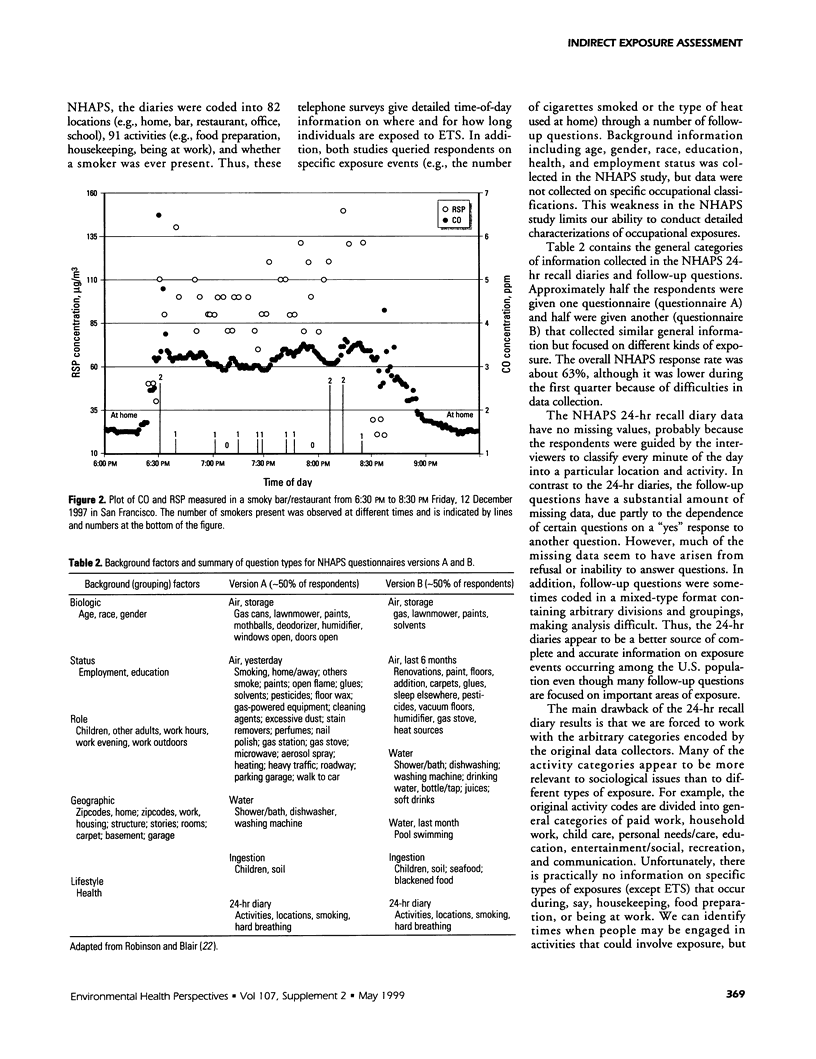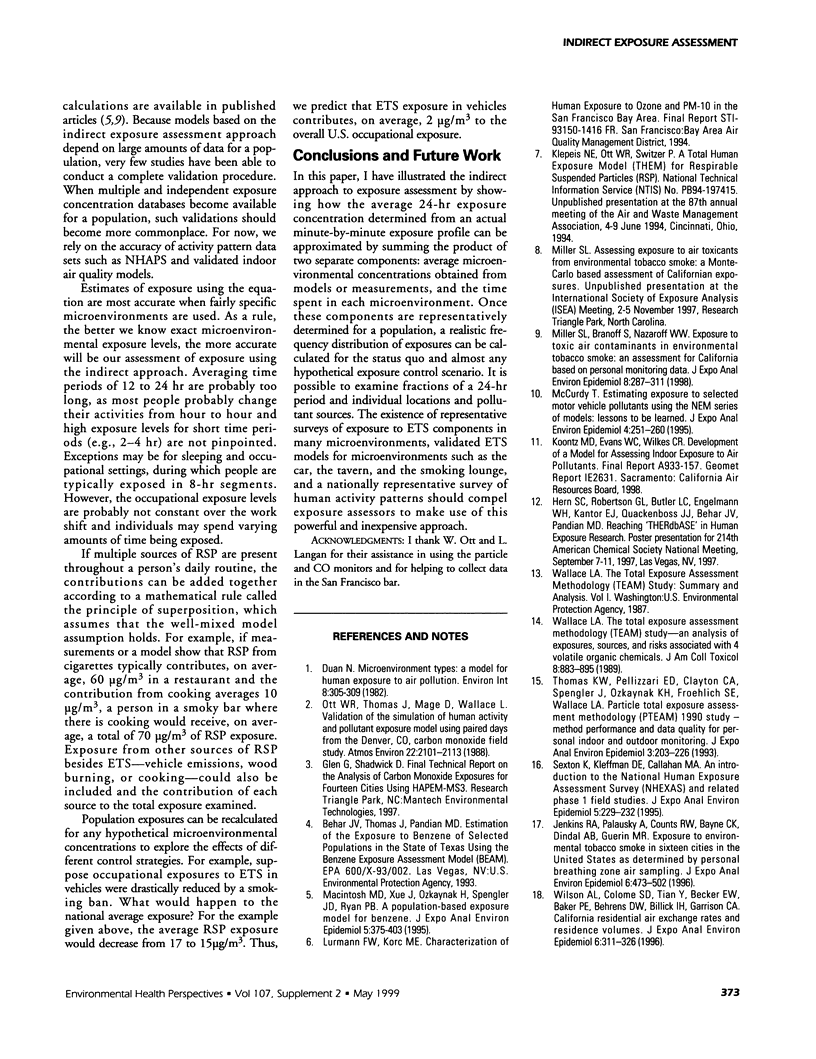Abstract
Indirect exposure approaches offer a feasible and accurate method for estimating population exposures to indoor pollutants, including environmental tobacco smoke (ETS). In an effort to make the indirect exposure assessment approach more accessible to people in the health and risk assessment fields, this paper provides examples using real data from (italic>a(/italic>) a week-long personal carbon monoxide monitoring survey conducted by the author; and (italic>b(/italic>) the 1992 to 1994 National Human Activity Pattern Survey (NHAPS) for the United States. The indirect approach uses measurements of exposures in specific microenvironments (e.g., homes, bars, offices), validated microenvironmental models (based on the mass balance equation), and human activity pattern data obtained from questionnaires to predict frequency distributions of exposure for entire populations. This approach requires fewer resources than the direct approach to exposure assessment, for which the distribution of monitors to a representative sample of a given population is necessary. In the indirect exposure assessment approach, average microenvironmental concentrations are multiplied by the total time spent in each microenvironment to give total integrated exposure. By assuming that the concentrations encountered in each of 10 location categories are the same for different members of the U.S. population (i.e., the NHAPS respondents), the hypothetical contribution that ETS makes to the average 24-hr respirable suspended particle exposure for Americans working their main job is calculated in this paper to be 18 microg/m3. This article is an illustrative review and does not contain an actual exposure assessment or model validation.
Full text
PDF









Images in this article
Selected References
These references are in PubMed. This may not be the complete list of references from this article.
- Jenkins R. A., Palausky A., Counts R. W., Bayne C. K., Dindal A. B., Guerin M. R. Exposure to environmental tobacco smoke in sixteen cities in the United States as determined by personal breathing zone air sampling. J Expo Anal Environ Epidemiol. 1996 Oct-Dec;6(4):473–502. [PubMed] [Google Scholar]
- Klepeis N. E. Validity of the uniform mixing assumption: determining human exposure to environmental tobacco smoke. Environ Health Perspect. 1999 May;107 (Suppl 2):357–363. doi: 10.1289/ehp.99107s2357. [DOI] [PMC free article] [PubMed] [Google Scholar]
- MacIntosh D. L., Xue J., Ozkaynak H., Spengler J. D., Ryan P. B. A population-based exposure model for benzene. J Expo Anal Environ Epidemiol. 1995 Jul-Sep;5(3):375–403. [PubMed] [Google Scholar]
- Miller S. L., Branoff S., Nazaroff W. W. Exposure to toxic air contaminants in environmental tobacco smoke: an assessment for California based on personal monitoring data. J Expo Anal Environ Epidemiol. 1998 Jul-Sep;8(3):287–311. [PubMed] [Google Scholar]
- Ott W. R. Mathematical models for predicting indoor air quality from smoking activity. Environ Health Perspect. 1999 May;107 (Suppl 2):375–381. doi: 10.1289/ehp.99107s2375. [DOI] [PMC free article] [PubMed] [Google Scholar]
- Sexton K., Kleffman D. E., Callahan M. A. An introduction to the National Human Exposure Assessment Survey (NHEXAS) and related phase I field studies. J Expo Anal Environ Epidemiol. 1995 Jul-Sep;5(3):229–232. [PubMed] [Google Scholar]
- Thomas K. W., Pellizzari E. D., Clayton C. A., Whitaker D. A., Shores R. C., Spengler J., Ozkaynak H., Froehlich S. E., Wallace L. A. Particle Total Exposure Assessment Methodology (PTEAM) 1990 study: method performance and data quality for personal, indoor, and outdoor monitoring. J Expo Anal Environ Epidemiol. 1993 Apr-Jun;3(2):203–226. [PubMed] [Google Scholar]
- Wilson A. L., Colome S. D., Tian Y., Becker E. W., Baker P. E., Behrens D. W., Billick I. H., Garrison C. A. California residential air exchange rates and residence volumes. J Expo Anal Environ Epidemiol. 1996 Jul-Sep;6(3):311–326. [PubMed] [Google Scholar]




